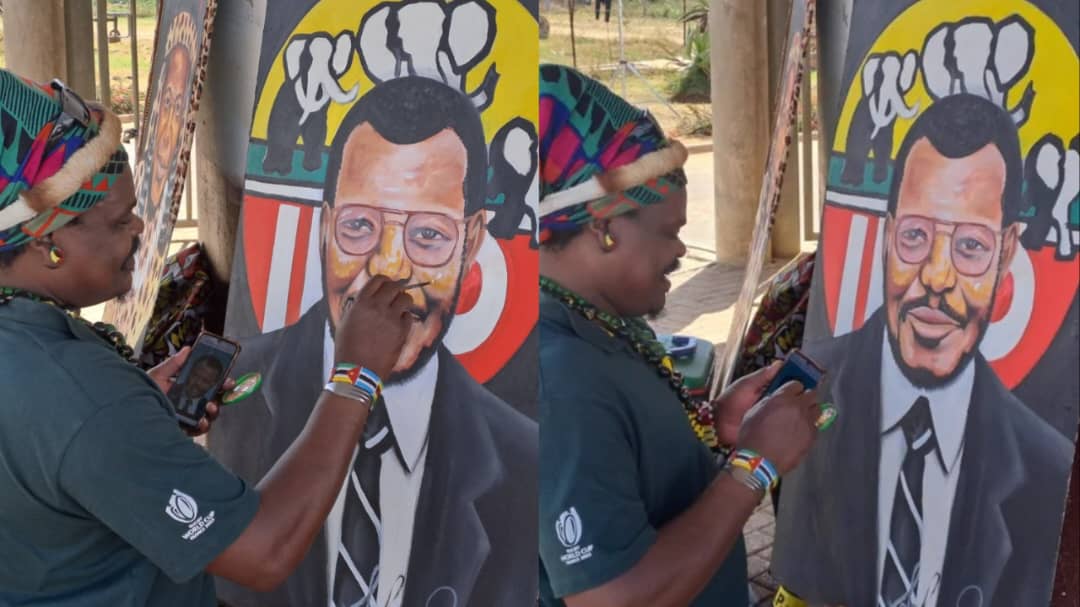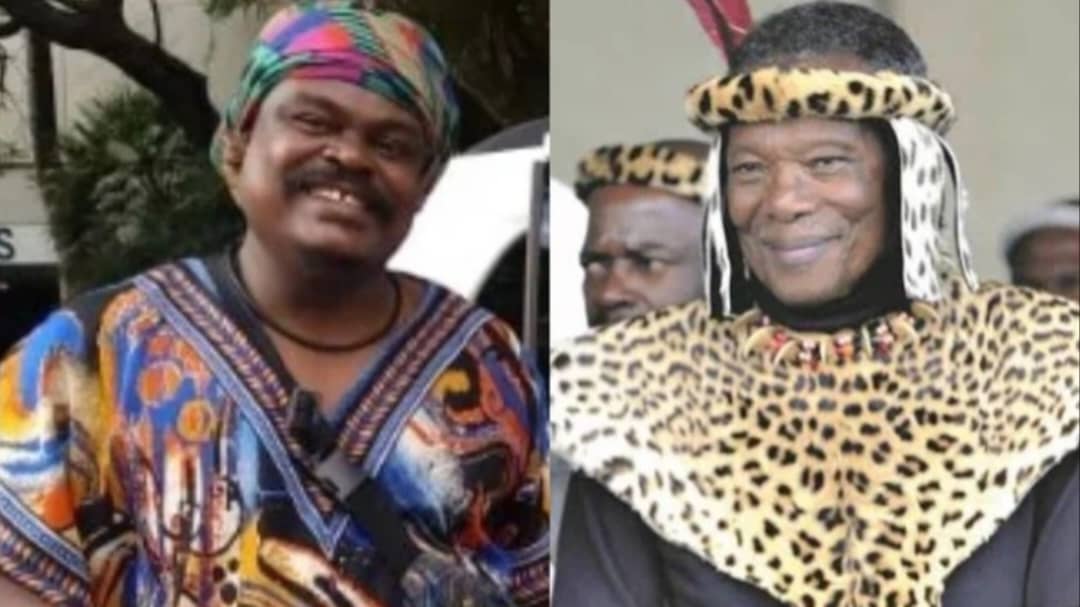Rasta The Artist Portrait Skills Shine With Prince Buthelezi Tribute
South Africans have marvelled at popular painter Rasta The Artist, real name Lebani Sirejenje’s portrait of the late Prince Mangosuthu Buthelezi who died last Saturday morning.
The artist attended the funeral of the late Traditional Prime Minister to the Zulu Monarch at the Prince Mangosuthu Regional Stadium in Ulundi, KwaZulu-Natal and honoured him with two portraits.
Rasta The Artist Nails Prince Buthelezi Tribute
Rasta The Artist is best known for painting portraits in honour of late South African celebrities and prominent personalities. His portraits have often been criticised for not resembling the late individuals. However, his two portraits of the late Prince Mangosuthu Butlelezi almost resemble the late monarch and Mzansi has an idea why.
Social Media Reacts: Humour and Appreciation

Taking to X, formerly Twitter, South Africans pointed out how Rasta The Artist’s paintings of Prince Mangosuthu Buthelezi resembled him. They humorously joked that Rasta The Artist drew a good portrait because he did not want to court the ire of the Zulu nation. Below are some of the comments:
@MrThizozo:
He drew properly because he knew Zulus were gona chop his head off
@jozitube:
Usile uRasta 😂😂 when he knows that he will be beaten if he messed up someone he makes them look good😂
@gasvanga:
Rasta fears the Zulus, this is the best portrait from him so far😂😂🥰🥰
@KhayaaSimza:
He had to do a good Job, otherwise the Zulu guys ababhenywa😂😂
@ghost_danmah:
He did his best but we all know why. Life was at stake
- Also Read: How Prince Mangosuthu Buthelezi Passed On
A Grand Farewell: Prince Buthelezi’s Funeral
Prince Mangosuthu Buthelezi, the late founder of the IFP and the traditional prime minister to the Zulu nation, was laid to rest in an official funeral of category 1 at the Prince Mangosuthu Stadium in Ulundi, KwaZulu-Natal. The venue was filled with thousands of mourners who came to pay their respects to the prince. The amabutho arrived on Saturday morning with his body, and the regiments were instructed to step aside, with the SANDF taking over. The service was led by the Anglican church.
